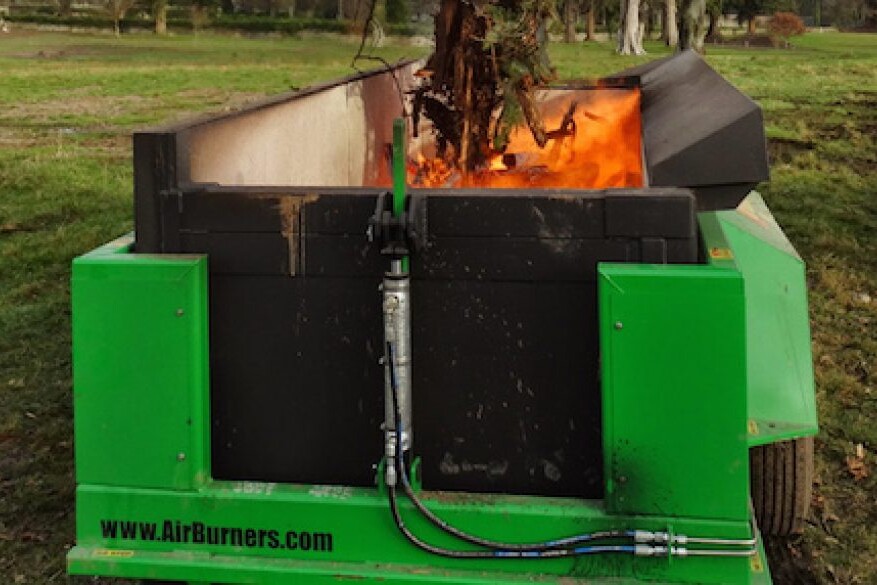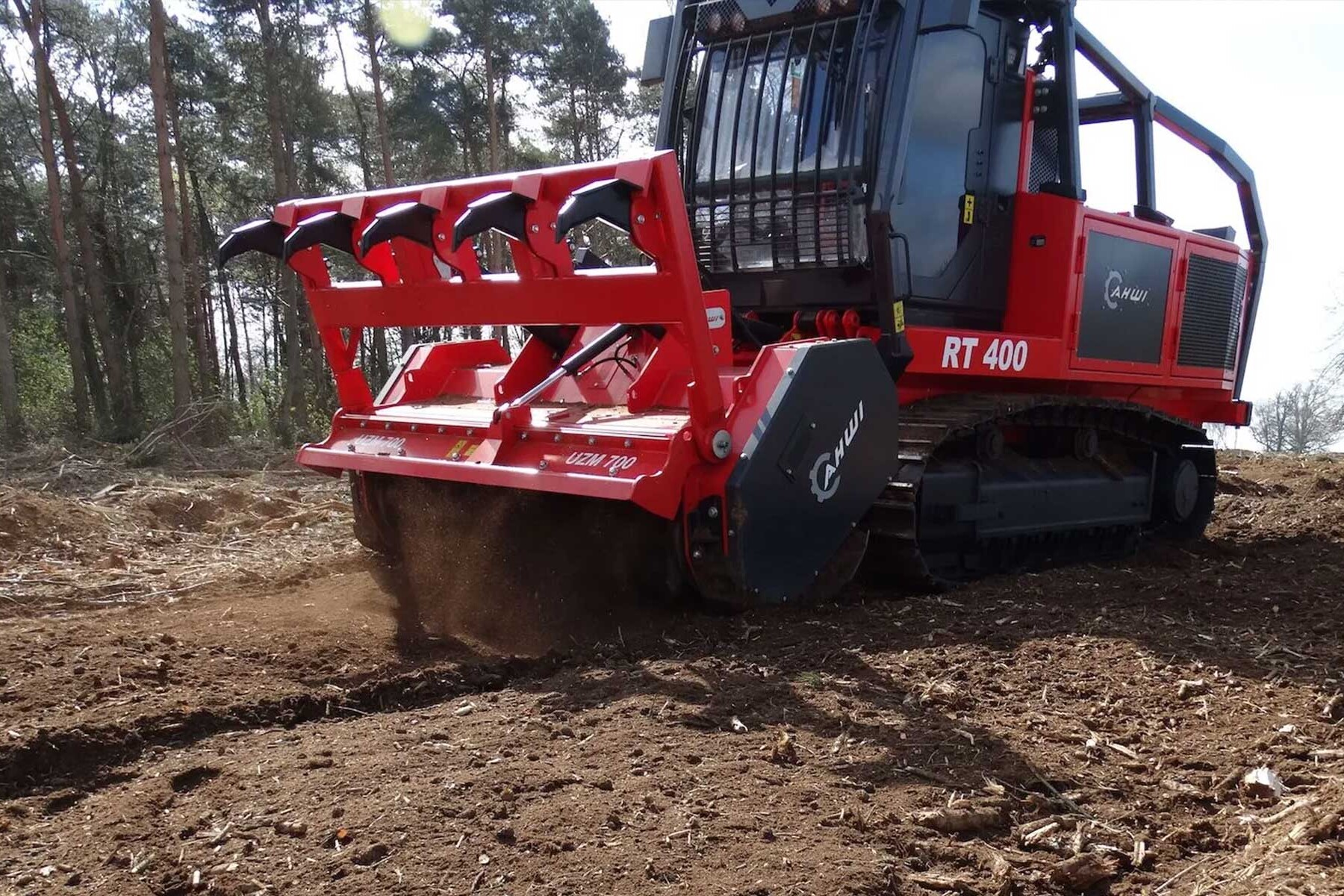Swansea Clyne Valley
Clyne Valley was one of the early infection sites for Phytophthora and large volumes of felled and excavated material had to be incinerated on-site, using mobile air-curtain incinerators.
Scope
With only two small processing areas to work in, one of which was at the site of a previous sky-line landing area at the top of a very steep slope, KHL deployed two large mobile burners to incinerate Rhododendron that was being excavated whole and moved by forestry forwarder, or baled, using a Deere 1490D forwarder-mounted bundler unit.
Challenges / Notes / Innovations
Over several months, KHL worked closely with Tilhill and the site contractors to efficiently burn all of the affected material on site. Under direct supervision of the Environment Agency, DEFRA and local Government environmental health officials, the work carried on, without any reported safety or environmental incidents.
New techniques were developed on-site to burn the soaking-wet material, which often had large volumes of soil entangled with the root plates as well. This often included the importation of waste wood from nearby wood processing facilities to assist with combustion.
This was the first large-scale project of its type in the UK.




